This is a list of bridges and viaducts in Chile, including those for pedestrians and vehicular traffic.
This table presents the structures with spans greater than 100 metres (330 ft) (non-exhaustive list).
{{cite book}}: |website= ignored (help){{cite book}}: |website= ignored (help){{cite book}}: CS1 maint: location missing publisher (link){{cite book}}: |website= ignored (help){{cite book}}: |website= ignored (help)
The Araucanía, La Araucanía Region is one of Chile's 16 first-order administrative divisions, and comprises two provinces: Malleco in the north and Cautín in the south. Its capital and largest city is Temuco; other important cities include Angol and Villarrica.

The Biobío River is the second largest river in Chile. It originates from Icalma and Galletué lakes in the Andes and flows 380 km to the Gulf of Arauco on the Pacific Ocean.
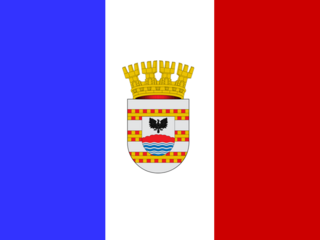
Collipulli is a city and commune forming part of the Malleco Province in the Araucanía Region in southern Chile. Its name means "coloured lands" in the Mapuche language spoken in the area. It has a population of 22,354 (2005) and an area of 1,296 km2 (500 sq mi). Its current mayor is Manuel Macaya Ramírez.

The Loa River is a U-shaped river in Chile's northern Antofagasta Region. At 440 km (270 mi) long, it is the country's longest river and the main watercourse in the Atacama Desert.

The Malleco Viaduct is a railway bridge located in central Chile, passing over the Malleco River valley, south of Collipulli in the Araucania Region. It was opened by President José Manuel Balmaceda on October 26, 1890. At that time, it was the highest such bridge in the world. The Panamerican Highway passes right next to the viaduct.

Coordinadora Arauco-Malleco (CAM) is a radical, militant indigenous organization engaged in political violence in pursuit of attaining an autonomous Mapuche state in the territory they describe as Wallmapu.
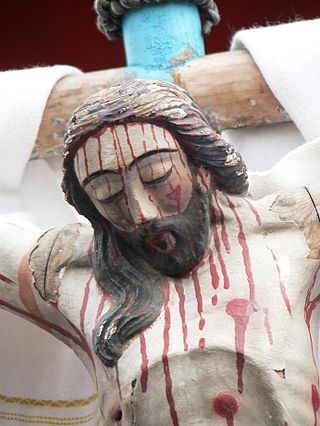
Chilote School of Religious Imagery —Spanish: Escuela chilota de Imaginería Religiosa—, is an artistic and cultural manifestation that was developed during the 17th century on the basis of the circular movement of evangelizing established by the Jesuit missionaries, and reaches its climax in the late 19th century.
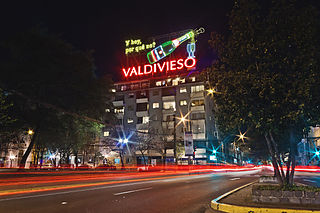
The Valdivieso advertising sign is a rooftop outdoor advertisement at 93 General Bustamante Street, Santiago, Chile. Erected around 1954, it was declared a National Monument of Chile on May 31, 2010.
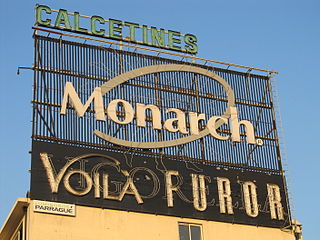
The Monarch advertising sign is a neon billboard located on the roof of a building at 51 Rancagua Street, in the Santiago Metropolitan Region of Santiago, Chile.
The history of Chiloé, an archipelago in Chile's south, has been marked by its geographic and political isolation. The archipelago has been described by Renato Cárdenas, historian at the Chilean National Library, as “a distinct enclave, linked more to the sea than the continent, a fragile society with a strong sense of solidarity and a deep territorial attachment.”

Santiago Metro Line 2 is one of the seven rapid transit lines that currently make up the Santiago Metro network in Santiago, Chile. It has 22 stations and 20.7 km (12.9 mi) of track. The line intersects with Line 1 at Los Héroes, with the Line 3 at Puente Cal y Canto, with Line 4A at La Cisterna, with Line 5 at Santa Ana, and Line 6 at Franklin. It will also intersect with the future Line 7 and Line 9 at Puente Cal y Canto. Its distinctive colour on the network line map is banana yellow.
Viaducto may refer to:
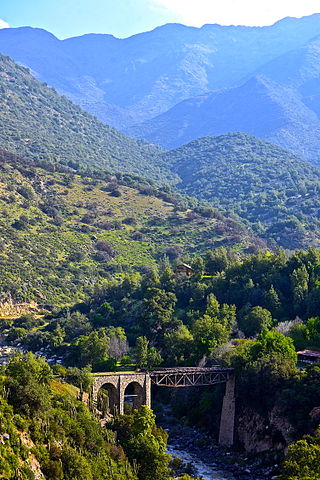
Puente Alto-El Volcán Railway is a small military railway between Puente Alto and El Volcán in Chile. The railway had a narrow gauge of 600 mm, and was constructed in 1906 under Chile's Ministry of Railways. As each section was completed, it was inaugurated: on March 1, 1910 ; in 1911 ; and on June 9, 1914. The railway was built at a cost of $2,335,630 and remained operational until 1985.

The Conchi viaduct, or Loa viaduct, is located on the Loa River in Chile, 68 kilometres (42 mi) from Calama. It was built to carry part of the Ferrocarril de Antofagasta a Bolivia. It stands 103 metres (338 ft) above the river and is 244 metres (801 ft) long. When opened in 1888 and it was the second highest rail bridge in the world, after the Garabit viaduct.